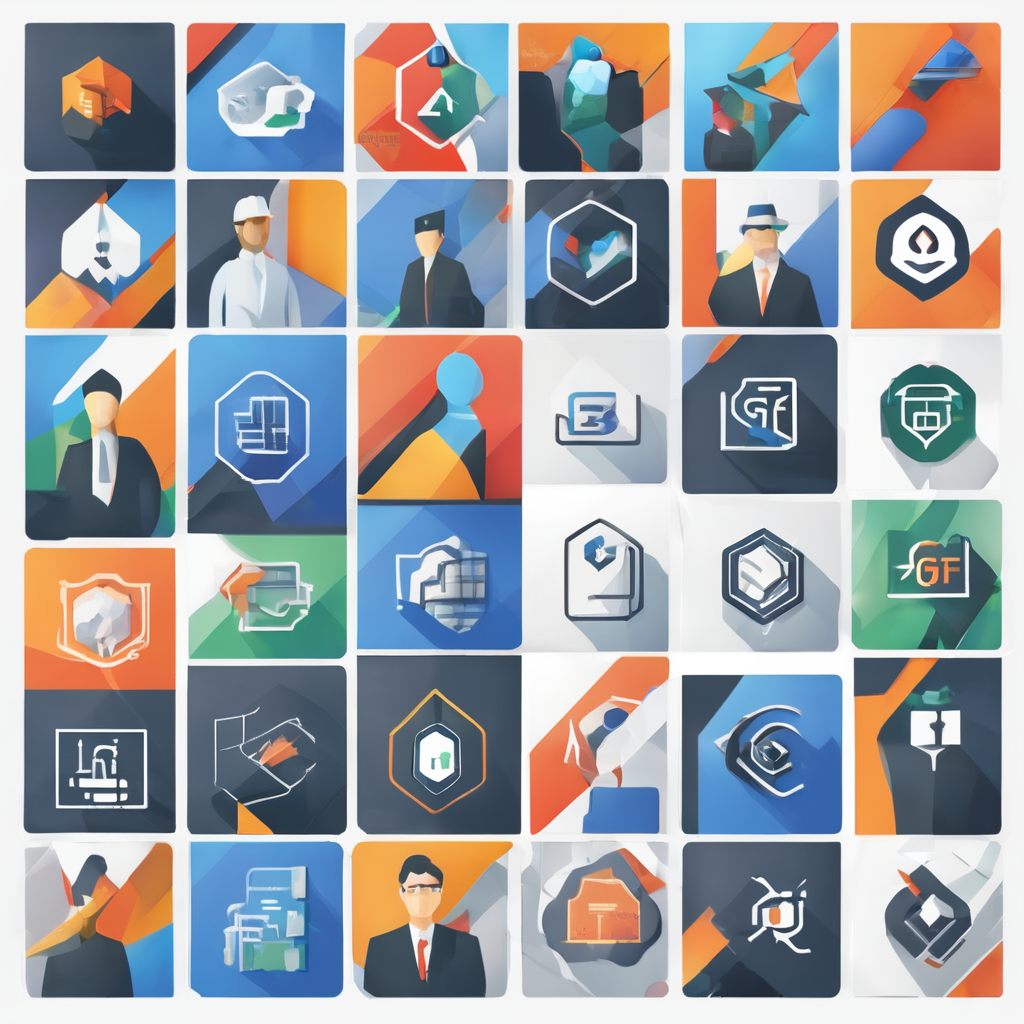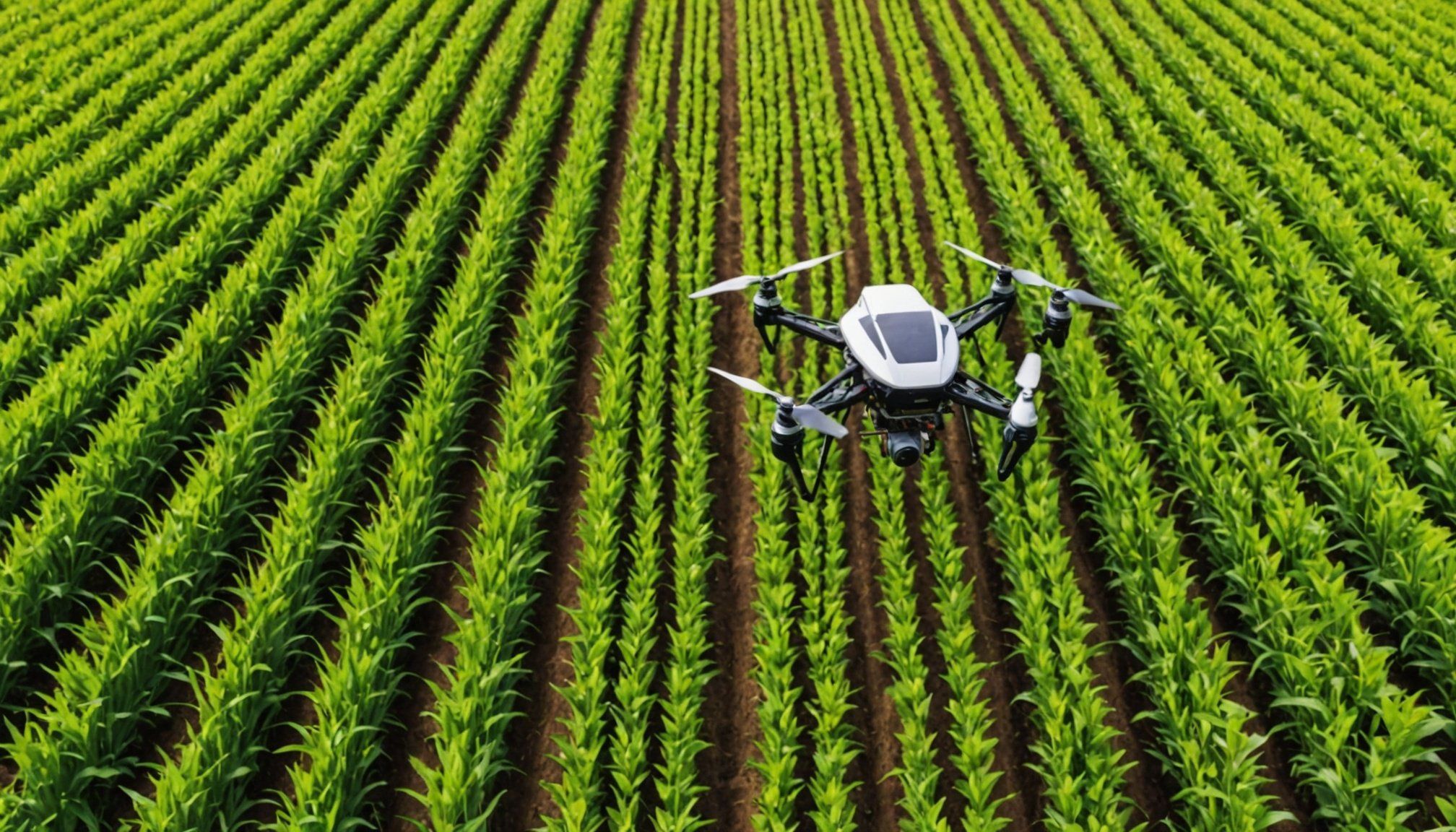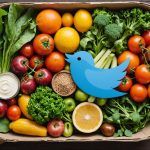Transforming UK Agriculture: Unlocking IoT Innovations for Enhanced Crop Surveillance and Agricultural Advancement
The agricultural sector in the UK is on the cusp of a revolutionary transformation, driven by the integration of Internet of Things (IoT) technologies and other cutting-edge innovations. This shift is not just about adopting new tools; it’s about fundamentally changing how farming is approached and executed. Here’s a deep dive into how IoT and associated technologies are reshaping the future of UK agriculture.
The Rise of IoT in UK Agriculture
IoT agriculture, often referred to as smart farming or precision agriculture, is revolutionizing the agricultural landscape in the UK. This involves using interconnected devices to collect and analyze data, which guides actionable decisions for farming operations. Real-time data from these devices aids in optimizing resources and increasing crop yields.
Additional reading : Innovative Strategies by UK Tourism Boards to Attract Global Tourists in a Post-Pandemic Era
Key Technologies in IoT Agriculture
Several technologies are pivotal in this revolution:
- Sensors: These devices monitor soil moisture, temperature, and other critical environmental conditions in real-time. By providing farmers with accurate data, sensors help in optimizing irrigation schedules, enhancing water conservation, and boosting crop yield[1].
- Data Analytics: Sophisticated analytics processes the data captured by sensors, enabling precision agriculture. This technology is crucial for predicting crop health and determining the best times for sowing and harvesting. Data-driven decisions minimize wastage and optimize resource use[1].
- Satellite-Based Crop Monitoring: Satellites provide real-time data on vegetation health and soil moisture levels, allowing farmers to make informed decisions about crop management[2].
- Drone Technology: Drones are used for field mapping and crop assessment, offering a detailed view of the farm from above[2].
Benefits of IoT for Crop Monitoring and Growth
The adoption of IoT in agriculture offers numerous benefits, both in terms of efficiency and sustainability.
Also read : Unlocking Growth and Performance: The Ultimate UK SME Guide to Cloud Computing Success
Enhanced Data Collection and Decision Making
IoT enables the collection of real-time data, which facilitates superior crop management. Farmers can identify optimal planting times, detect early signs of crop stress, and make well-informed decisions based on accurate and timely information[1].
Resource Optimization and Sustainability
Smart farming significantly contributes to reducing resource waste. By implementing precision agriculture, inputs like water, fertilizers, and pesticides are used judiciously. This not only optimizes resource use but also minimizes environmental impact, promoting more sustainable farming practices.
For instance, a farm in Yorkshire that employed IoT for precise crop health monitoring achieved a significant boost in yield while reducing water usage by 30%. This success underscores the potential of IoT in transforming traditional farming methods[1].
Case Studies of Successful IoT Applications
Exploring case studies provides valuable insights into practical implementations of IoT in agriculture.
Hugh Lowe Farms: A Success Story
In the UK, Hugh Lowe Farms, a supplier of strawberries for the Wimbledon Championships, has seen significant benefits from IoT technology. By connecting every shipment through IoT connectivity, the team can locate and track every load in real-time, ensuring the strawberries arrive in the best possible condition. On the farm, IoT technology delivers live insights into soil and crop conditions, enabling the farm to water the fruit only when needed and use pesticides more effectively[3].
Future Trends in IoT Agriculture
The field of IoT agriculture is continuously evolving, with emerging innovations set to further transform the industry.
Advanced Robotics and Autonomous Farming
Future innovations like advanced robotics and enhanced data processing technologies are on the horizon. These technologies will facilitate more efficient farm operations by enabling autonomous machinery for tasks such as sowing and harvesting. Predictions suggest these emerging technologies will play a crucial role in addressing labor shortages and improving precision in farming practices[1].
Increased Integration of AI and Machine Learning
The integration of AI and machine learning with IoT will lead to more proactive farming decisions. For example, AI-powered systems can predict crop yields, pest outbreaks, and market trends with unprecedented accuracy. Farmonaut’s Jeevn AI Advisory System provides personalized farm advice and real-time insights, helping farmers make data-informed decisions[2].
Government and Industry Partnerships
The role of government and industry partnerships is pivotal in propelling these innovations. Collaborative efforts can enhance investment in research and development, making advanced IoT technologies more accessible. Partnerships also support the expansion of digital infrastructure, vital for rural connectivity and IoT functionality[1].
Practical Advice for Farmers Embracing New Technologies
For farmers looking to embrace these new technologies, here are some practical tips:
- Start Small: Begin with small-scale implementation of new technologies to understand their benefits and challenges.
- Invest in Training: Train your staff on the use of new technologies to ensure smooth integration.
- Monitor and Adjust: Continuously monitor the performance of new technologies and adjust your practices accordingly.
- Collaborate with Experts: Collaborate with experts and other farmers to share best practices and learn from their experiences[2].
The Role of 5G in Enhancing IoT Capabilities
The advent of 5G technology is set to revolutionize the agricultural sector further.
Enhanced Rural Connectivity
5G networks are extending high-speed internet to remote farming areas, bridging the digital divide and enabling farmers to access advanced technologies. This enhanced connectivity is crucial for the seamless operation of IoT devices[4].
Real-Time Data Transmission
The high-speed, low-latency nature of 5G allows for instantaneous data transfer from IoT devices in the field to central processing systems. This real-time data transmission is essential for precision agriculture, enabling farmers to make immediate decisions based on current conditions[4].
Precision Agriculture and Autonomous Farming
5G enables the use of advanced sensors and drones for precise monitoring of crop health, soil conditions, and weather patterns. Additionally, the low latency of 5G networks will enable the widespread use of autonomous tractors and harvesters, controlled remotely through platforms like Farmonaut’s[4].
Comparative Analysis of Traditional and IoT-Enabled Farming Practices
Here is a comparative analysis of traditional farming methods versus those enhanced by IoT and 5G technologies:
| Agricultural Process | Traditional Method | 5G/IoT-Enabled Method | Estimated Efficiency Improvement |
|---|---|---|---|
| Crop Monitoring | Manual field inspections | Real-time satellite and drone imagery analysis | 50% reduction in monitoring time |
| Irrigation Management | Scheduled watering | Precision irrigation based on real-time soil moisture data | 30% increase in water conservation |
| Pest Control | Reactive treatment after pest detection | Predictive pest management using AI and IoT sensors | 40% reduction in crop losses due to pests |
| Yield Prediction | Historical data and manual estimation | AI-powered yield forecasting using multi-source data | 25% improvement in yield prediction accuracy |
| Resource Allocation | Fixed schedules for fertilizer and pesticide application | Dynamic resource allocation based on real-time crop needs | 35% reduction in input costs |
Environmental Impact and Sustainability
The integration of IoT and 5G technologies in agriculture is not only about increasing efficiency but also about reducing the environmental impact.
Water Conservation
Precision irrigation systems, enabled by IoT and 5G, use real-time soil moisture data to deliver water exactly where and when it’s needed, conserving this precious resource. For instance, IoT-enabled irrigation systems have been shown to increase water conservation by up to 30%[1][4].
Reduced Greenhouse Gas Emissions
By optimizing the use of fertilizers and pesticides, IoT and 5G technologies help in reducing greenhouse gas emissions. Automated systems and predictive analytics ensure that these inputs are used judiciously, minimizing their environmental impact[2][3].
Climate Change Mitigation
Sustainable agriculture practices, facilitated by IoT and 5G, play a crucial role in mitigating climate change. By promoting efficient use of resources and reducing waste, these technologies help in maintaining soil health and reducing the carbon footprint of agricultural activities[3].
Quotes from Industry Experts
- “We understand the immense pressure farmers face to deliver high-quality produce while dealing with rising costs and environmental challenges. Our mission is to help growers protect their profits while adopting more sustainable practices,” said Charles Veys, CEO of Fotenix[2].
- “5G networks can transmit data up to 100 times faster than 4G, revolutionizing real-time agricultural monitoring and decision-making,” highlighted a report from Farmonaut[4].
The future of UK agriculture is undoubtedly digital and sustainable. With the integration of IoT, 5G, AI, and precision agriculture, the sector is poised for significant growth and improvement. These technologies not only enhance farm efficiency and productivity but also contribute to a more sustainable and eco-friendly agricultural sector.
As the world population is projected to reach 9.1 billion by 2050, the need to produce 50% more food than current levels becomes imperative. By digitizing farming and bringing technology into the agricultural industry, we can empower farmers to increase production sustainably while reducing their environmental impact[3].
In conclusion, the transformation of UK agriculture through IoT innovations is a journey that promises not just enhanced productivity but also a more sustainable future for farming. As we move forward, it is clear that these technologies will be indispensable in shaping the agricultural landscape of tomorrow.











